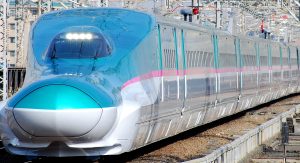
As India continues to modernize its transportation infrastructure, the prospect of introducing Shinkansen trains, commonly known as bullet trains, has emerged as a significant development. The Shinkansen, which has been a hallmark of Japanese engineering since its inception in the 1960s, is synonymous with speed, safety, and efficiency. With India’s ambitious plans to revolutionize its railways, the adoption of Shinkansen technology presents an exciting opportunity for the country’s railway system.
What Are Shinkansen Trains?
Shinkansen trains are high-speed rail services that operate at speeds exceeding 300 km/h (about 186 mph). They are characterized by their aerodynamic design, advanced signaling systems, and commitment to punctuality. The Shinkansen network in Japan has earned a reputation for safety, with no recorded fatalities due to accidents since it began operation. The trains are equipped with cutting-edge technology, allowing for smooth rides and minimal environmental impact, making them an ideal choice for modern transportation systems.
India‘s High-Speed Rail Vision
The Indian government has recognized the need for a robust high-speed rail network to address growing urbanization, reduce travel times, and alleviate congestion on traditional railway lines. The most significant step towards this vision is the Mumbai-Ahmedabad High-Speed Rail Corridor, which will be India’s first bullet train project, utilizing Shinkansen technology. The project aims to drastically cut travel time between the two cities from approximately 8 hours to just 2 hours.
The Mumbai-Ahmedabad corridor is expected to feature:
Speed: Trains capable of running at speeds of up to 320 km/h.
Connectivity: Stops at several key cities along the route, enhancing regional connectivity.
Technology Transfer: Collaboration with Japanese firms, ensuring the transfer of technology and expertise to India.
Benefits of Shinkansen Trains in India
Reduced Travel Time: The introduction of high-speed trains will significantly decrease travel times between major cities, facilitating faster business and tourism travel.
Economic Growth: Enhanced connectivity is expected to stimulate economic activities, boost trade, and create jobs both during and after the construction phase.
Environmental Sustainability: Trains are generally more energy-efficient and environmentally friendly compared to cars and airplanes, aligning with India’s goals for sustainable development.
Safety and Reliability: The Shinkansen system’s track record for safety and punctuality can enhance public confidence in rail travel, encouraging more people to use trains over other modes of transport.
Challenges Ahead
While the prospects of Shinkansen trains in India are promising, several challenges need to be addressed:
Funding and Investment: High-speed rail projects require substantial investments. The Indian government must secure funding and manage costs effectively to ensure the project’s success.
Land Acquisition: Acquiring land for the rail corridors can be a contentious issue, often leading to delays and public protests.
Technological Adaptation: Adapting the sophisticated Shinkansen technology to suit India’s unique geography and existing railway infrastructure will require careful planning and execution.
Public Awareness and Acceptance: Building public awareness about the benefits of high-speed rail and addressing concerns related to displacement and environmental impact are crucial for garnering support.
The introduction of Shinkansen trains in India marks a significant milestone in the country’s railway modernization efforts. With its potential to transform transportation, enhance economic growth, and promote sustainable development, the implementation of high-speed rail is an ambitious step towards a more connected and efficient India. As the Mumbai-Ahmedabad corridor sets the stage for future high-speed rail networks across the nation, it paves the way for a new era in Indian rail travel. The success of this venture will depend on strategic planning, investment, and the active engagement of all stakeholders involved.

Leave a Reply